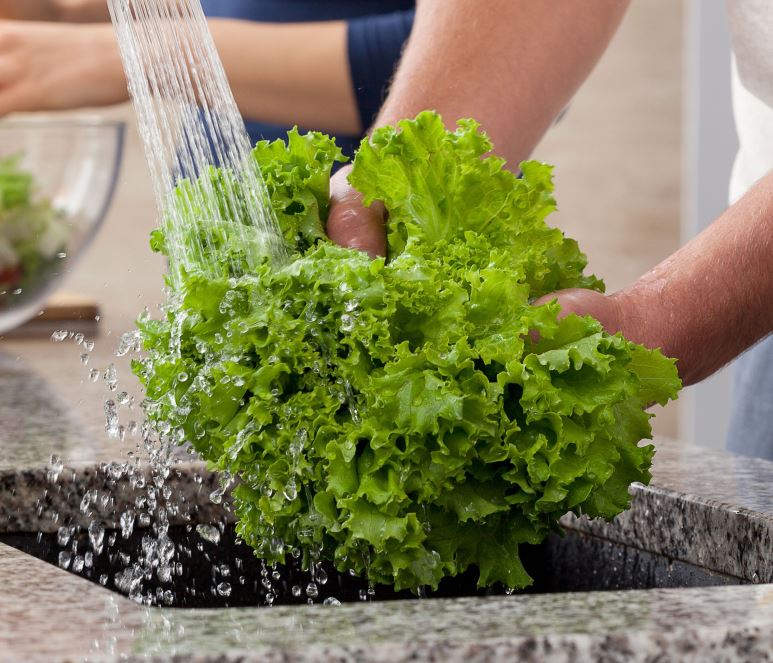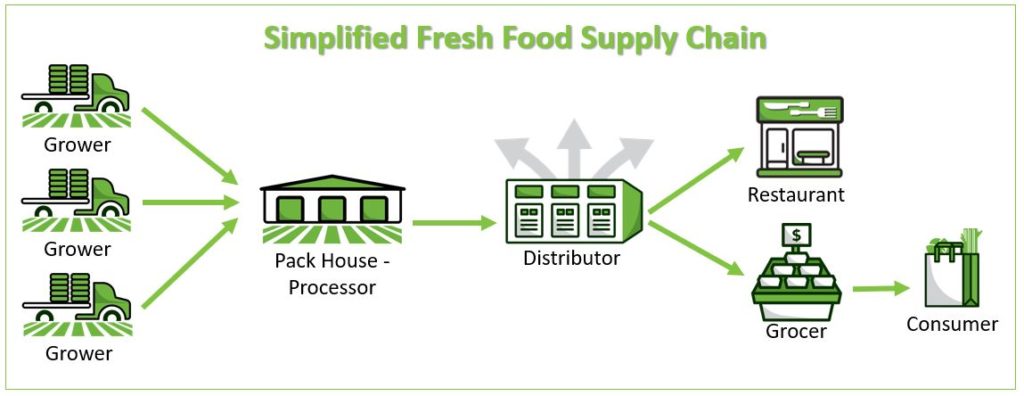It’s always good to think about food safety tips as we approach one of the biggest food and barbecue weekends of the year.
Food safety continues to be a challenge as last week saw yet another food safety outbreak, this one related to salmonella associated with papayas from Mexico.
Recent Food Safety Challenges
The last two years has seen three E. coli food safety issues related to romaine lettuce alone. In 2018, according to Food Safety Magazine, we had 382 food product recalls. Some relate to undeclared allergens or some sort of non-biological contamination like plastic or metal being found in the food. These non-biologic contaminants are likely easier to deal with as they don’t “spread”, and they can be easier to identify and recall.
On the other hand, biologic contamination due to E. coli, salmonella and listeria, for example, are extremely dangerous and can be very difficult to address once product has entered the supply chain. In the case of the most recent E. coli issues with romaine, there were never recalls for the produce as the source of the contamination was either never identified or was identified long after the produce would have been removed from the supply chain, consumed or discarded due to the passage of time. (Romaine that was contaminated in November, for example, won’t be on the store shelves in February.)
When thinking about food safety, we all have a role to play. Here are three tips to consider.
Food Safety Tip #1: Don’t Always Believe the Hype
Here’s the first food safety tip: Don’t believe it when someone says a technology, such as blockchain, solves the food safety problem. Blockchain, on its own, can provide traceability…as can other solutions. But the solutions can only address a recall if there’s a recall. As noted above, if the source can’t be identified, there’s no way to issue a recall.
And, a technology like blockchain, is only as good as the data that goes into it. Fresh food supply chains can be very complex. You could have a supply chain that looks like this:
Consider, for example, bagged salads that have three ingredients, there would be individual suppliers for romaine, iceberg and carrots. Those suppliers send their products to a processor. The processor then sends their bagged salad to one or more distributors who sell to dozens or hundreds of restaurants and grocery stores. If data integrity is maintained from harvest through to the restaurant or grocer then, once the cause of the problem is identified (for example, lettuce purchased at a particular store or consumed at a specific restaurant), we can trace back. Blockchain and other solutions can help speed that process along, particularly if the records have been digitized by using tools like IoT sensors and cloud-based solutions to autonomously collect and organize digitized data.
But, remove one digital link and you’ve slowed the trace back process down as you have to revert to a paper-based system. Lose a link completely, well, that can make traceability impossible.
And that’s just trace back. Once we identify the supplier, we then have to trace forward to find everywhere that food went. That romaine grower may have also supplied other processors. You get the picture. It’s not an easy problem to solve. And, as we saw with the previous outbreaks, blockchain did not solve the romaine problems. Technology must be a part of the solution.
Food Safety Tip #2: Take a New Approach
Much of our food safety system is reactive. When there’s an issue, we try to find out where the contamination came from and trace backwards to the source, as described above. Dr. Bob Whitaker of the Produce Marketing Association states that we need a new way of thinking to address food safety. He addressed the issue in his April 10 blog post Produce Safety Insights Can Come From Unusual Places. He proposes we rethink how we handle food, starting at the source. (You can read our thoughts on Dr. Whitaker’s post in our blog.)
Whitaker writes:
Any new approach that is developed to manage a pathogen contamination hazard needs to be based on the risk that hazard poses to public health, leverage our best science, and be executable in our production environments. That is not to say that new approaches are easy, comfortable, cost neutral or even 100% effective. But they do have to be explainable to all the stakeholders in our “sandbox” and more importantly defensible.
Taking a broader view should help manifest the courage it takes to make the difficult changes in our operations.
Changes in our operations could be building in and prioritizing actions to address cross contamination hazards from ag water, to soil amendments, to the proximity of animal feeding operations and the efficacy of our sanitation practices along the supply chain.
Produce safety initiatives to improve our practices cannot ignore science and even common sense and devolve into efforts to protect the status quo or provide safe harbor for the weakest among us. The one lesson we should have learned by now is that a single operator or even a single event can bring down an entire segment of the produce industry and impact all those in our “sandbox”.
We should proactively address food safety to help prevent issues. Knowing the quality and safety of irrigation water and not using water from areas near feed lots are common sense.
The Leafy Greens Marketing Association (LGMA) is taking steps to strengthen mandatory food safety practices required on farms. An April 19, 2019 article on their website states:
…Every box of leafy greens placed into commerce by a certified LGMA member will soon be produced under new, more stringent requirements that are designed to reduce risk when it comes to water used in growing leafy greens. The updates include specific directives such as no longer allowing the use of untreated surface water for overhead irrigation of leafy greens prior to harvest.
The LGMA program has always required growers to test their water because it can be a carrier of pathogens. But the new requirements now include additional safeguards that ensure farmers: categorize the source of the water; consider how and when water is applied to the crop; conduct testing to assure the water is safe for the intended use; sanitize water if necessary; and verify that all of the above precautions have been taken.
This is a step in the right direction. We should applaud organizations like the LGMA, PMA and United Fresh that are pushing for improvements in our food safety system.
Food Safety Tip #3: Good Consumer Practices
Ultimately, some of the responsibility for food safety is on us, the consumer. There are some good practices that we can employ at home to help minimize or eliminate food safety issues. According to FightBac, there are four core practices that consumers should follow to minimize risks associated with food-borne bacteria:
- Clean: Wash hands and surfaces often. Bacteria can be spread throughout the kitchen and get onto hands, cutting boards, utensils, counter tops and food. Consider wiping up with paper towels instead of cloth ones. Here’s one that I don’t often think about: Rinse fresh fruits and vegetables under running tap water, including those with skins and rinds that are not eaten. With papayas, for example, we don’t eat the rind but that’s often where bacteria can be found. If you don’t wash the outside of the papaya first and you then cut into it, that knife can contain bacteria that spreads to the flesh of the fruit and create contamination.
- Separate: Don’t cross contaminate. Don’t use the same cutting board for fruit, eggs and meat, for example. Don’t put cooked food on a plate that previously held raw food.
- Cook: Ensure that foods are cooked to the proper temperature to kill bacteria. You can download this easy reference guide and tape it to the inside of a kitchen cabinet…that’s what I did. Then use a thermometer to check the internal temperatures of cooked foods.
- Chill: Refrigerate foods promptly. Cold temperatures slow the growth of harmful bacteria. Make sure cold air circulates to help keep food safe and keep a constant refrigerator temperature of 40°F or below.
And, I’ll add these additional food safety tips:
- Wash fruits and vegetables just before you eat them. This is also mentioned in The Huffington Post. If you wash them and then put them into the refrigerator, the moisture can promote bacterial growth.
- If you buy packaged salad mixes, for example, make sure they say that it says “triple washed” on the package. Even still, it’s a good idea to rinse the lettuce again and dry it off with paper towel or a salad spinner before you consume it.
Learn more about how Zest Fresh plays a role in addressing food safety.



